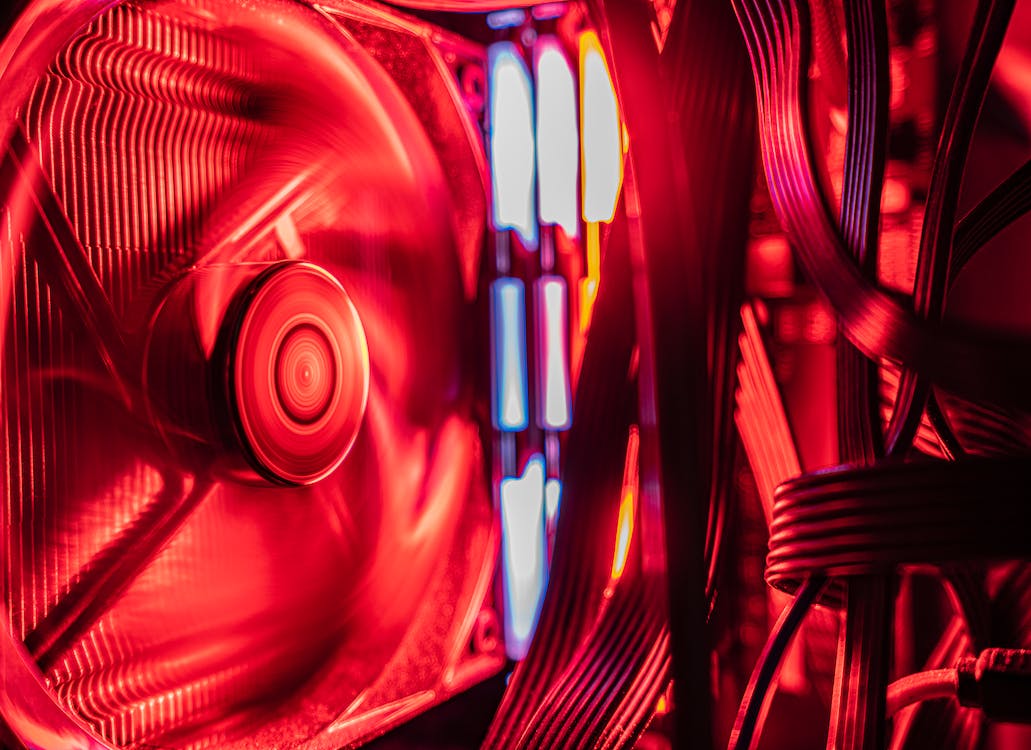How to Upgrade Your PC Hardware Without Spending a Fortune
by siteadmin

Studies show that the optimal PC hardware refresh timing is three years. After that, the total cost of ownership rises due to maintenance costs, out-of-warranty repairs and security risks.
Upgrading to secure, responsive and high-performing PCs built on the Intel vPro(r) Essentials platform can help you meet employee and customer technology expectations, reduce lost productivity and stay safe from costly cyberattacks.
Upgrading to a Solid State Drive
If your computer has an older hard disk drive, or if it’s slowing down after several years of use, the best solution is to upgrade to a solid state drive. SSDs are much faster than HDDs and provide a huge boost in performance. Additionally, they’re more durable and consume less power than an HDD.
Upgrading to an SSD can improve performance by a wide margin and will make your computer feel new again. If you don’t have enough storage space for an entire SSD, a good alternative is to add another hard drive. This will give you additional storage capacity without the expense of buying a new laptop or desktop PC.
A hardware refresh can be a daunting process, and it’s important to take the time to plan the transition with your team. You may want to implement the refresh in phases, or roll it out all at once. Either way, you’ll want to set a clear timeline and budget. This will help your organization avoid unexpected expenses.
Depending on the technology refresh strategy you choose, it’s also important to consider the impact on business operations. You’ll need to find a suitable date for the refresh, and you’ll likely need to work around any existing IT initiatives. This can be challenging, but working with an IT support partner that’s familiar with hardware refresh projects can minimize any disruptions.
Before you start the upgrade process, back up your data to an external drive. This will ensure that your files won’t get lost during the upgrade process and reduce the risk of data loss or theft. Additionally, you should check for updates for your computer’s operating system and drivers before starting the update.
When it comes to upgrading to an SSD, you can either perform a clean install or clone the existing drive. Cloning the existing drive is the simplest option for most computers. Follow the instructions in your chosen cloning software to make a clone of the existing boot drive onto the new SSD. This process will take a bit of time, but it’s worth the wait to experience the improved speed and efficiency of an SSD.
Adding More Memory
The amount of data that is processed by your computer’s hardware has a significant impact on the speed of the machine. A good way to improve the performance of your system without buying new hardware solutions is by adding more memory. This will also increase your computer’s productivity by making it more responsive.
Adding more RAM is one of the most inexpensive DIY upgrades you can make to a desktop PC or many laptops. It’s very easy and requires little-to-no technical knowledge. All you need are new RAM sticks of the correct size to fit your motherboard.
A RAM upgrade will help your business by increasing the speed at which information is transferred from your hard drive to memory and back again. This helps your business keep up with the demands of data-intensive processes, as well as allowing users to complete more tasks per session. It’s a great option for those who are constantly working with large files and graphics.
Before purchasing new RAM you should run a free online scanner to find out which type of RAM your desktop or laptop has installed and the current total capacity. This is very important because you don’t want to waste money by adding RAM that won’t be used and will slow your machine down.
It’s also important to note that RAM and storage have different impacts on the speed of your machine. So if your hard drive is very full then replacing it will have a greater effect on your overall system performance than adding more RAM.
Another reason why company-wide refreshes are so beneficial is that it will decrease your chances of an IT outage. If your old machines are constantly breaking down you will be calling in an IT support service which costs money and time. Keeping up with the latest technology reduces the risk of this happening and keeps your workforce productive at all times.
It’s also a good idea to perform a hardware refresh on a regular basis because as software and applications become more demanding it will become necessary to have the newest tech in place. Staying atop of your hardware solutions will also protect you against security breaches because hackers are less likely to be familiar with older systems and programs.
Adding a Hard Drive
It’s no secret that a hardware refresh is important to the health of your network. In addition to lowering IT expenses, hardware refreshes improve productivity and strengthen security, both of which are important in the business world. With the proper support, the process of upgrading your computer hardware is easier than ever before.
However, a successful IT refresh requires more than just selecting new technology. It also takes a clear understanding of the best time to do it. Refresh too early and you could be wasting money on hardware that will only remain relevant for a short period of time. Pushing servers and computers far past their lifecycle, on the other hand, can be a risk to your business’s core operations.
For example, older computers may only be able to run certain applications and programs because they cannot handle modern computing standards. Additionally, older computers are often a target for hackers as they lack the latest security features. Keeping your hardware up to date ensures that your employees can work with the latest software and applications and protects your data from cyberattacks.
Adding a hard drive is an easy and affordable way to boost the performance of your existing machines. The first step is to purchase a new hard drive with more storage space than your current one. Then, remove your old hard drive and replace it with the new one. Make sure that you back up any files that are important so that if something goes wrong, you can restore them.
Once the new drive is installed, you will need to clone the data from your old hard drive to the new one. This will allow you to keep all of the files and settings from your old machine, which is important if you are working with multiple users. Once the cloning process is complete, you can begin to install programs and start working with your new machine.
While a PC Hardware Refresh can seem daunting, it is an essential part of maintaining your IT infrastructure. With the right help, this process can be easy and effective, and it will ultimately save you money and time in the long run.
Adding a Memory Card
Adding a memory card is one of the easiest upgrades to do. Whether your computer has a limited amount of memory or it is simply running slow, an extra gigabyte can significantly improve performance. The main benefit of the additional memory is improved startup times and the ability to handle multiple browser tabs without the system crashing. The extra space also allows for more video streaming, faster game play and a better overall experience.
Before purchasing a new memory card it is necessary to determine whether your computer can accept additional RAM. To do this, open Task Manager and locate your system settings. You will see a list of the total amount of memory installed, the maximum capacity and how much is currently in use. Once you have this information, subtract the current amount from the maximum to find out how much you can add to your system. Then you can decide what type of memory to purchase. You will need to know the speed of the memory as well, since not all are created equal.
Once you have the memory that will work with your system, install it as directed by the manufacturer. This usually involves toggling the plastic retention clips at either end of each memory slot and removing the existing memory. It is important to remove the old memory in a static-safe environment, either by blasting the slots with compressed air or vacuuming gently.
After installing the new memory, reboot your computer to ensure that it is recognized by the system. This can be done by launching the Control Panel and clicking System and Security, or navigating to System in the search bar. If the amount of memory listed in the window matches the amount of memory you installed, your refresh was a success!
Having an IT team that is dedicated to keeping your company up to date on hardware can greatly enhance productivity. It will reduce downtime and keep your employees happy. In addition, your company will save money on energy costs. Ultimately, the benefits of a hardware refresh far outweigh the initial cost.
https://pchardwarerefresh.com.au/
Studies show that the optimal PC hardware refresh timing is three years. After that, the total cost of ownership rises due to maintenance costs, out-of-warranty repairs and security risks. Upgrading to secure, responsive and high-performing PCs built on the Intel vPro(r) Essentials platform can help you meet employee and customer technology expectations, reduce lost productivity…
